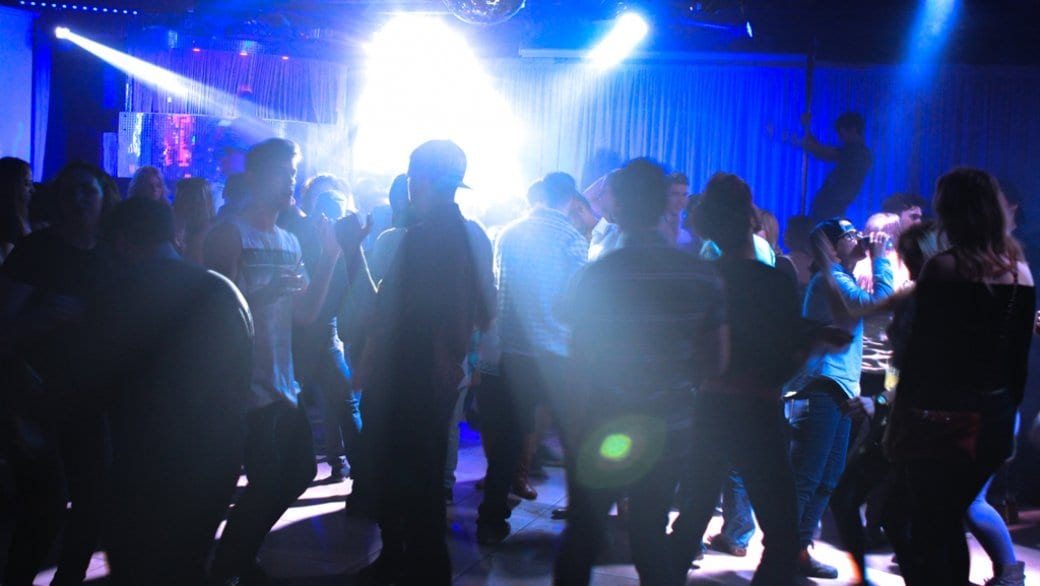The harnesses and chains are out at Club 200. Scruff and jockstraps are on full display tonight for subWOOFer, the monthly gathering at Club 200, where kink and fetish collide.
On the dancefloor, there are collars, smiles and laughs — and the soft glow of cellphones.
Ever since Grindr took off in 2009, its reception has been a mixed bag of heavy emotions. Depending on who you ask, hook-up apps are either the best thing that have happened for gay men in the 21st century, or they’re ruining any semblance of community we’ve built throughout the years. Seven years later, we’re still talking about it.
But tonight, Club 200 is making full use of its 200-person capacity. At a glance, you wouldn’t even know that Winnipeg’s gay bars have been through rocky years, including the loss of one of its oldest running establishments.

Gio’s Club and Bar closed after 31 years in business. Jay Rich, the bar’s former president, puts most of the blame on hook-up apps.
“I think we were unaware, in the beginning, of the massive toll many of those meeting sites were insidiously beginning to take on our club,” Rich says. “No matter what we did, the community did not support Gio’s Club and Bar as it once did.”
Michael Oliveira, a DJ who worked at Gio’s for five years, cried when he heard the club was closing.
Oliveira identifies as straight, but says Gio’s gave him a place where he could express himself without judgment. “It was my home. I felt I lost a part of my life. I felt like a family member died when Gio’s closed.”
The building sat empty for years after Gio’s shut down, and has been subject to both a fire and the work of vandals. But now renovations are underway in preparation for a new Mexican restaurant, set to open sometime soon.
Kameron Hilroy’s one of the guys at Club 200 tonight. He’s also on Grindr. He’s in a long-term relationship, but likes to explore his fetish side, shirtless and in a safe place, while mingling face-to-face with guys he’s met online.
Bobby Hudon is decked in alternative fetish wear — a gas mask and a fishnet top. He doesn’t think gay bars should be needed anymore, but still frequents them.
“I think that the fear and security of a gay bar isn’t needed anymore and I think that’s actually a good thing,” he says.
Hudon’s on Grindr, too.
“I have it on all the time all day,” he says, laughing. “To be honest I check it like four or five times; even at work I’m always on it.”
Hudon, like Hilroy, prefers face-to-face interaction, and says sometimes conversations on the app feel “intangible.”
“It’s a classic case when someone messages me right away and says ‘oh hey sexy,’ and I’m like, you don’t know who I am.”
Kerry Bertoncello-Dale, 24, downloaded Grindr a few years ago and spends hours on it daily.
“It’s nice knowing (that) you can like talk to people who are in your same position,” he says. “For me, I do it for chatting and for boredom purposes, but then there’s times where you’re really horny and just want to fuck someone so you’re like, let’s see who’s online and then you go for it.”
He says he finds it easier to hook up over Grindr than leaving the bar with someone.
“I think it would be weirder for me leaving with someone at the bar than some random person to come to my house. I don’t know why,” he says.

As LGBT acceptance in Canada continues to grow, the question then seems obvious: if guys are using apps to hook up, is there even a need for gay bars anymore?
Fame Nightclub is just down the street from Club 200, and while the crowd is more diverse, it’s a good night for the bar. Business hasn’t slowed down since the bar opened five years ago.
Beverly Claeys, senior general manager of Fame, isn’t sure if a gay bar will be needed in the city in five years’ time.
Prior to Fame, Claeys managed Club Desire before it shut down in 2009. During her time at Desire, Claeys says she came from a year away to find the club’s mostly gay clientele had been replaced. “All our regulars were gone and straight people were there, so that was unfortunate, because it really was the clientele that was close to my heart,” she says
Desire’s 4 am closing time had quickly made it a popular spot for everyone else looking for a late night, gay or straight. And while Claeys was sad to see the bar shut down, it was a sign that the nightlife scene would soon become more mixed.
“It’s nice to see that people can go to any club and not feel threatened,” she says.
Of course, not everyone agrees.
Phones continue to buzz away at Club 200. It’s Sunday, just after 1am, but the night still seems young, and everyone’s still having a good time.
“It’s more than you would do at a bar regularly,” Hilroy says of the fetish night. “It brings out, like, the slutty exhibition in the group.”
Bertoncello-Dale agrees.
“I can go to the straight bars with my girlfriends now and dance and have fun but at the same time, I’m like, I don’t know if I should hit on that guy,” he says.
“Straight people have literally every bar to go to in the entire city. We have two bars.”

 Why you can trust Xtra
Why you can trust Xtra


